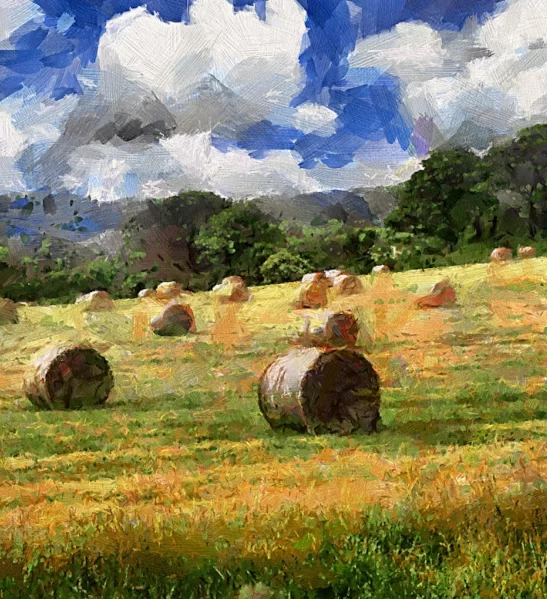What exactly is landscape painting? How could landscape painting become a passion? What does a life of a landscape artist look like? What are some of the best spots in America (and the world) to practice landscape painting?
In today’s post, I am pleased to feature an interview with an expert in the field of landscape painting and wildlife art. Dan Miller, an inspiring artist from Impression Evergreen, was so kind to share his experiences and lifetime passion for art.
Dan is a top 100 colored-pencil artist. Born to an artistic family in western Nebraska, Dan has always been surrounded by an environment, in which appreciation for art was common. At his home in Evergreen, Colorado, he searches for truth and beauty, which he observes in nature. He draws, paints, and takes amazing photographs. While landscape painting and drawing are his leading projects these days, Dan used to paint portraits. I was happy to talk to him about the interest that we share in common. His commissioned portraits included portrait of Bill Snyder and other sportsmen. In the interview, I talk with Dan about his background in art, career development, and challenges that he encountered along the way.
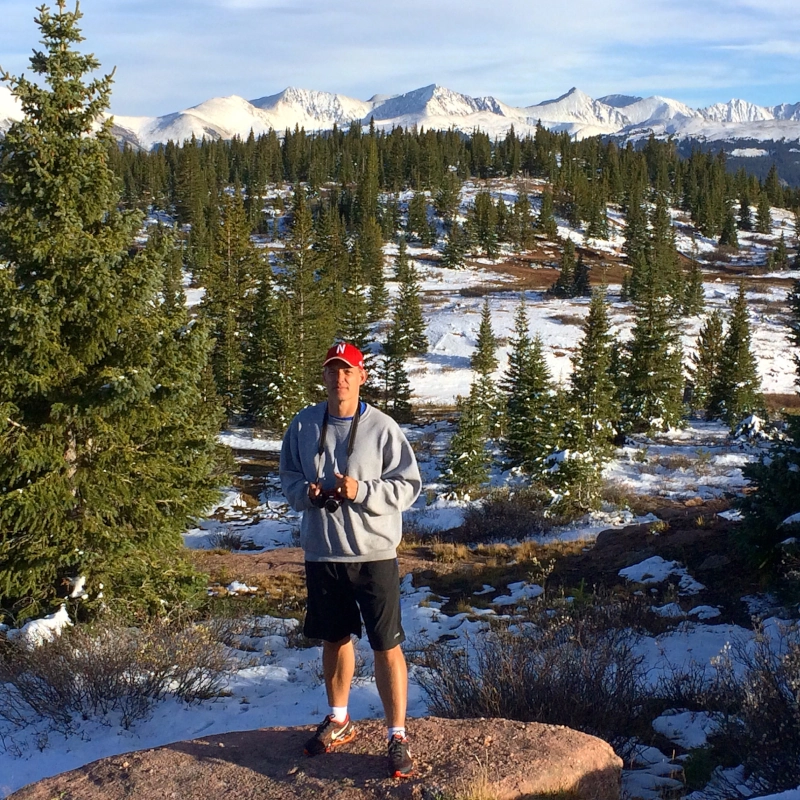
About art, paintings and drawings with Dan Miller
How did it all begin? My history with art.
Noble Portrait (NP): Where does your passion for art come from? And what fascinates you about art?
Dan Miller (DM): My passion for art comes from my family. My two younger brothers and I grew up in a family environment in which art was very highly encouraged. My dad’s parents struggled with his predilection for art, which is why he himself was more motivating and inspirational to us. My father became a high school art teacher. He always pushed us to be creative and express ourselves through artistic means. While he never gave us any formal lessons, my dad always made sure that all the materials, such as paper, pencils or paints, were available to us. He really encouraged us to paint, draw, sculpt, and express ourselves.
NP: What artistic media do you use, and what was the process of discovering your inclination to them?
DM: Pencil was my favorite medium, which I started with as a young boy. I would spend a lot of time experimenting with it. At college, I became more painting-oriented; I would use and learn about watercolors, acrylic, and oil paintings. Coming out of college, I was doing sports art for collectibles and stores. The sports art included a lot of portraiture in different media.
When I got married after college, I returned to pencil, which is much easier. I can pick it up and put it down quickly, allowing me to work on artwork at different times of a day. I also connected with Ann Kullberg, one of the better pencil artists in the U.S. I have been influenced by her as far as colored pencil goes. In my free time, I try to do some things with oil painting, which is a premiere medium, and acrylic; both oil and acrylic are gallery art.
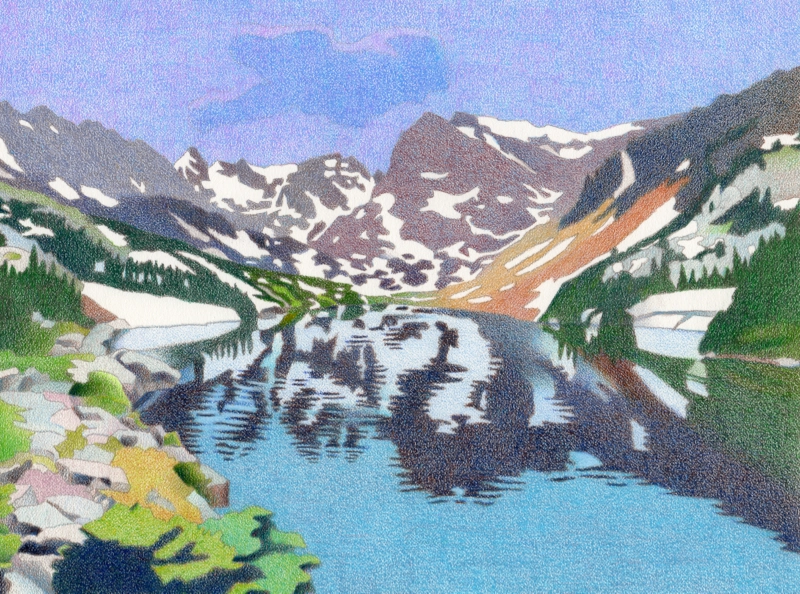
NP: You live in a beautiful place in Colorado, so that might be the answer to my next question, but I will ask it anyway. Where does your deep interest in and appreciation for landscape painting and wildlife art come from?
DM: My mom has really instilled me with deep interest in and appreciation for nature. She has a real passion for wildlife and animals. As we were growing up in western Nebraska, we had horses, cattle, and pigs, along with some exotic bids like peacocks or guineas. We also had a raccoon in the house for a while. Even as a little kid, I always enjoyed wildlife, and hiking in the outdoors.
My wife and I both come from a small town. We started out in Denver, Colorado, and we were seeking a place with a small-town atmosphere. Evergreen seemed to fit perfectly that criteria. I spend a lot of time wandering around. I like to observe nature and wildlife, which I hope comes through my photography, drawings, landscape painting, and other artistic media.
From Passion to Education. Career development.
NP: What has been your career path to be where you are today? What is your background in art?
DM: I got a degree in Fine Art from Chadron State College. I had some really amazing instructors, who inspired me to study painting, drawing, and photography. After college, I got a job as a graphic artist. I have also learned a lot through the graphics, especially about the printing industry, photography, design settings, and types. Concurrently, I remain deeply committed to my enthusiasm for fine art. My favorite thing in fine art is doing a painting or a drawing, as opposed to a digital art on computers and other computer stuff.
NP: Are your other family members still in the world of art?
DM: My youngest brother is an art teacher in Missouri. He is also a fine artist doing a lot of gallery work. His pieces are on display in Chaplin, Missouri.
NP: What surprising lessons have you learned along the way?
DM: The biggest lesson I have ever received is to always embrace your own personal artistic style. When you are an artist, you know what naturally fits you. And that’s one thing my dad always pressed on me: fully embrace your natural style, and do not imitate or work like other artist.
Even though I understand this lesson intellectually, following it gets difficult when you study art and old masters. You look at your heroes, like van Gogh or Rembrandt, and you feel like you want to imitate their style, use their colors, and draw or paint like they did. However, sometimes that can be a struggle because that’s not your true style.
Whatever your style is, you should go with it. Maybe your piece of art does not sell well at the beginning. But, I still believe that in the long run it is better to paint from your heart.
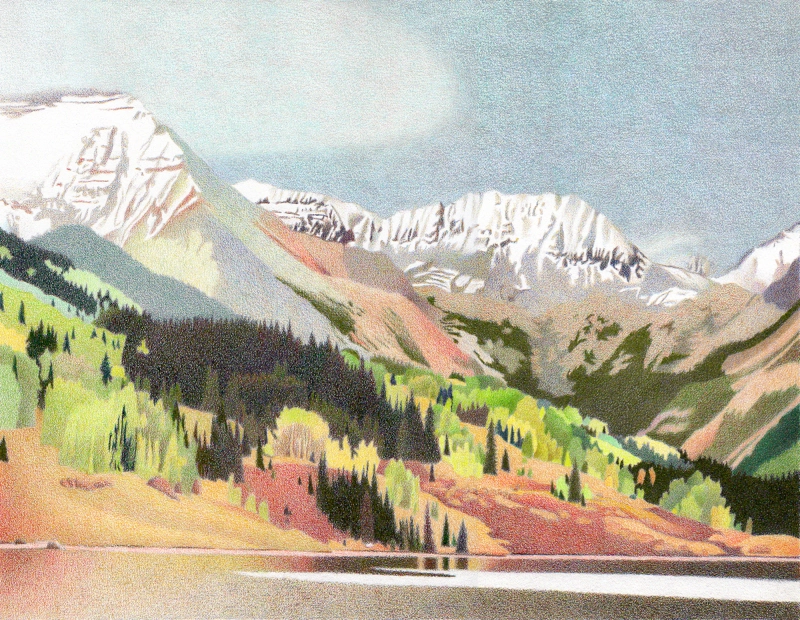
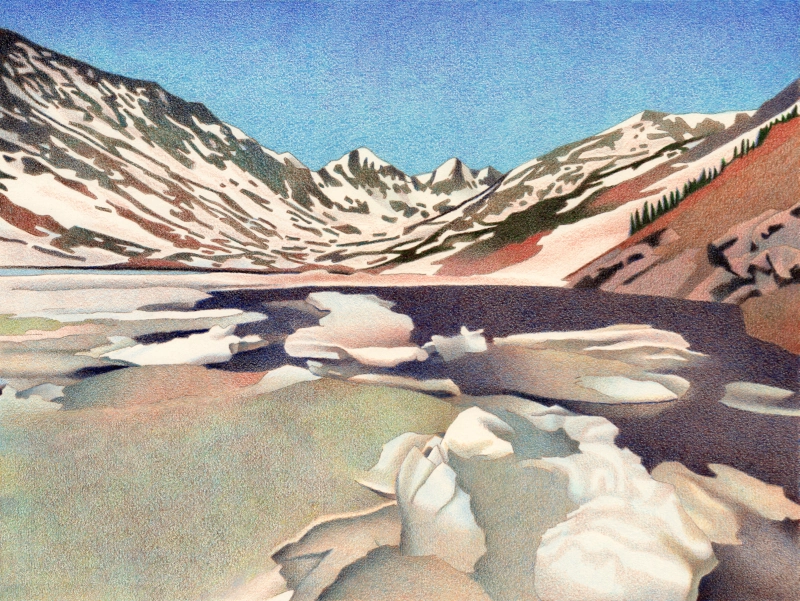
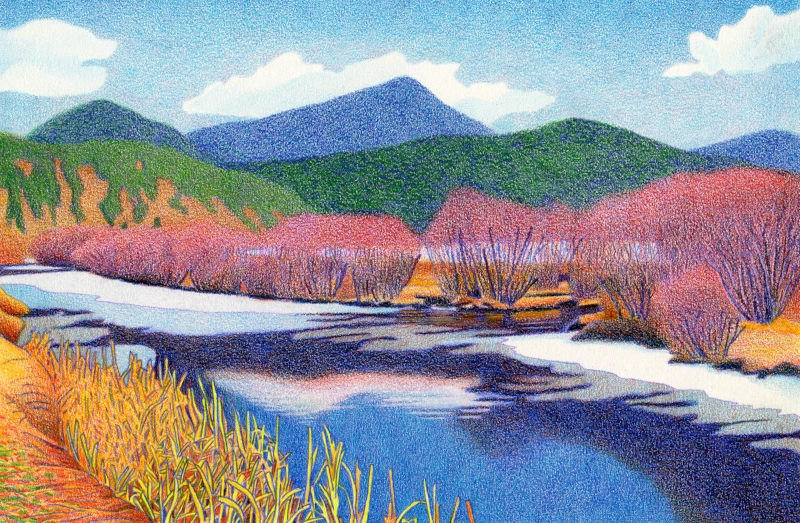
NP: What would you have done differently if you knew then what you know now?
DM: I would consider going into teaching art instead of graphic design, which is difficult because of its commercial nature. In graphic design, you create art work for sale, and you get a paycheck for that. However, it is pretty hard to switch back over to being a fine artist. After working on graphic design for the entire day, you come back in the evening tired, making it impossible to focus on fine art.
Thinking back, I sometimes wish I would have gotten a teaching degree, which allows you to remain a fine artist at all times. Not only do you have an art studio at school, but you are in the loop with galleries and other art teachers and artists.
NP: In addition to your passion for art, photography and writing, you are a graphic artist for a printing company. How do you balance work, passion, and family demands?
DM: That’s the toughest thing you always need to be mindful of. I have a lot of friends who are artists and writers. The biggest thing they tend to deprive themselves of is sleep. To me, it is important to run a balanced life, which includes getting to bed much earlier than 2:00 or 3:00 o’clock in the morning. I personally try to be conscientious balancing my family, job, and fine art. I am lucky to have worked at the same graphic arts company for 18 years, which earned me a lot of flexibility and leeway to keep my regular schedule.
While it is tempting to stay up late at night, when it’s quiet and inspiration is at its finest, it is important to put things down early. Not getting enough sleep can be destructive. A few friends of mine already suffer from some serious anxiety and depression.
From Passion to Education. Career development.
NP: I know you have done some portraits, for instance a portrait of Bill Snyder. What do you think is the most difficult thing about portraits?
DM: The most difficult thing about portraits is capturing the person’s personality. A lot of artists can do a photo-real representation, but the hardest thing is making sure that their spirit, personality and heart are all represented on the portraiture. I love doing portraits. I take my time to get to know the person, and understand who they are.
In my bedroom, all I have on the walls are the beautiful portraits of my wife and kids.

NP: I was reading about the A to Z Challenge that you participated in. Tell me about 3 challenging projects you have been involved in?
DM: I could think of the following:
- Book cover illustration : A writer from San Diego reached out to me to illustrate the cover for her children’s book. She liked my style of pencil drawing and she wanted a cover featuring a dragon. She did not want a video-game style nor pre-school cartoon-ish looking cover. Her fantasy book was a fascinating story about pigs, dragons and farm animals. This was a challenging project for me. I am used to working from real landscapes and images. This project required a lot of imagination. I received a book to read the entire story, understand the characters, and imagine the passage the cover was supposed to represent. I did a lot of sketches, making up light, poses and characters. In the end, she really liked my ideas, and the printing company was happy with the final outcome.
- Ann Kullberg book: I was very fortunate to be selected as one of the top 100 colored pencil artists in the world. I was so honored when Ann Kullberg reached out to me to submit my drawings for the book that she published. I made a trout lake drawing for this project.
- A to Z Challenge: A friend of mine from Hawaii informed me about the challenge where I would need to photograph and write about animals, of which names begins with each letter of the alphabet. I had no problem taking the photographs of the 26 animals from A to Z, but it was tough to write about them. It was a lot of fun in the end, and I got to meet a lot of people, so I hope to participate again this April.
NP: 3 reasons why people should care about fine art.
DM: I am a proponent of art, and I support it, and I promote it. Art has always been there ever since the beginning of time. Art , being so important to human culture and society, is what makes us different from other beings on earth. Arts are good for mind and spirit. We need avenues to express themselves. We need avenues to get out of the digital world to look at the pure beauty. In my opinion, you do not have to be a great artist to create art. You can do simple things like gardening or knitting to create art. That said, the world is a more beautiful place when there is art around us, artwork hanging on the walls, or sculptures in gardens.
NP: Who do you admire most and why?
DM: I admire my parents most. Both my mom and dad had such a big influence on me and my brothers. Looking back, I really appreciate how we were raised in a trusting and loving environment. I love and admire them for creating such a beautiful family setting. Now that I am a parent myself, I understand how hard this could be to allow a free-spirited environment. The work they did for us is pretty amazing.
Artistically, my favorite artist is Vincent van Gogh with his phenomenal life story. I am in deep admiration for his philosophy about nature, art, and religion. He was also such a good writer. My artistic approach has always been influenced by van Gogh. Even though I do not frequently paint in oils or impasto style, I still enjoy looking at and learning from his work. I have done a lot of studies after his paintings as drawings. I learned a lot about color and composition, line and perspective.
NP: What are 3 pieces of advice would you give to aspiring artists?
DM: Here is my advice:
- Keep working everyday
- Stay true to yourself: do not draw or paint because other people tell you to do so
- Never give up: when a drawing on a board is not coming out the way I want to, I usually want to throw it away on the spot. However, I do not give up; I put it back and come back to it at a later time.
Drawings, photographs and portraits: courtesy by Dan Miller.

